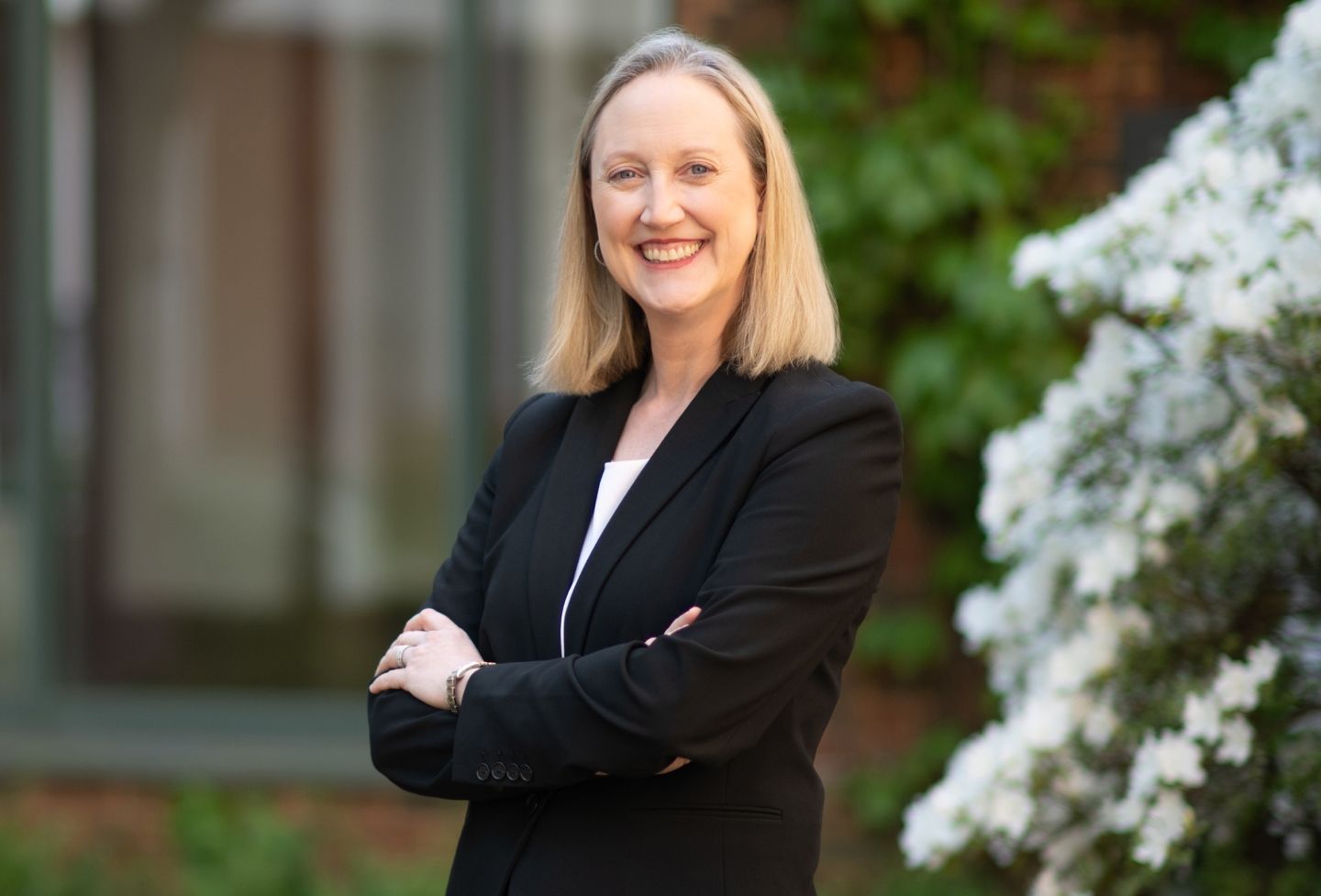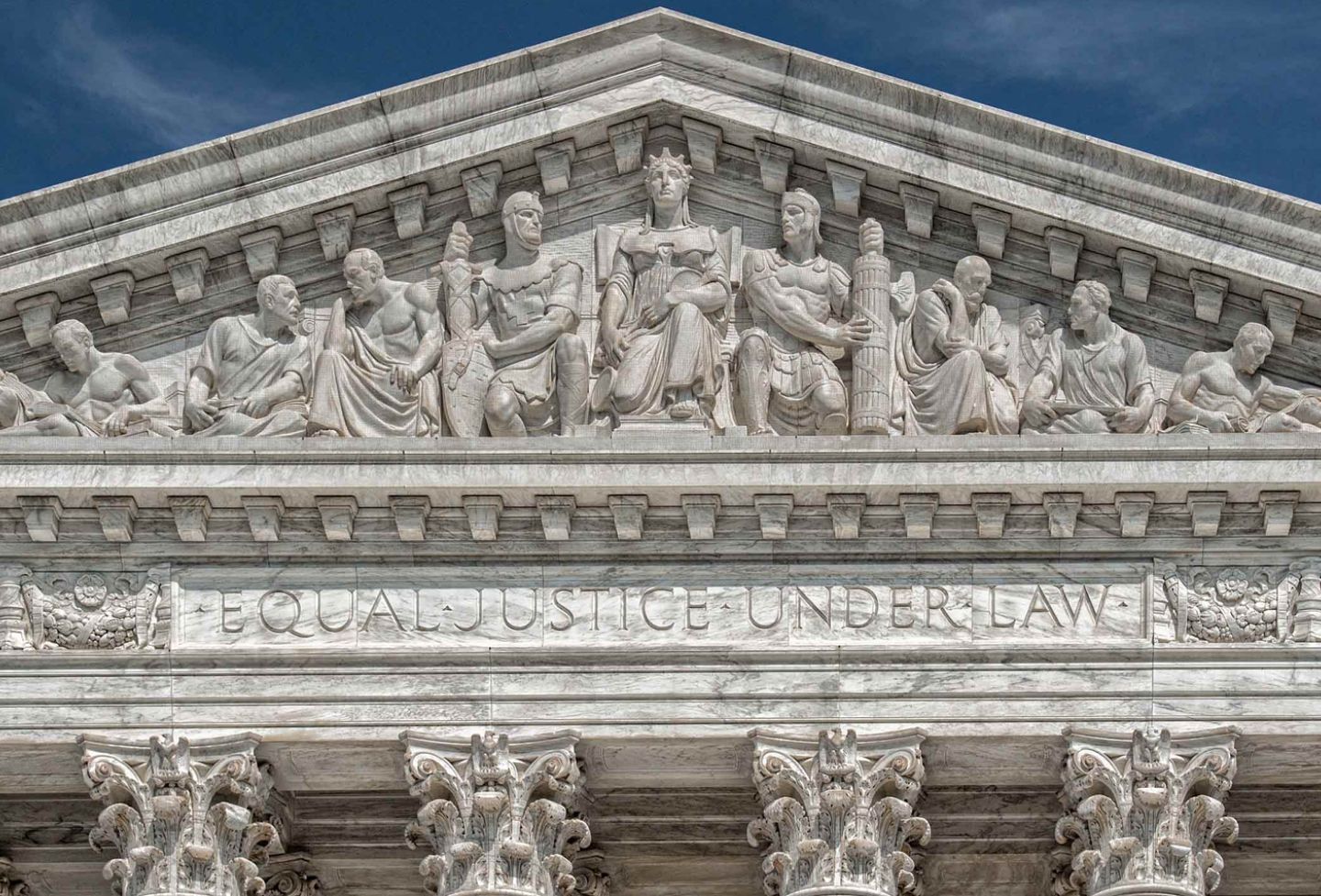D.C. Circuit Has Special History Among Appeals Courts, Roberts Says

The United States Court of Appeals for the District of Columbia Circuit owes its role as an authority on administrative law to its unique history, said Judge John G. Roberts at the Ola B. Smith Lecture April 20, an event hosted by the Student Legal Forum and the Virginia Law Review.
Roberts, former Principal Deputy Solicitor General of the United States under the first Bush administration, joked that the D.C. Circuit was notable in part because its appeals and district court judges share the same building, making it possible during lunch to sit next to a judge "who moments before, you announced to the world as guilty of abuse of discretion or plain error." Roberts is one of the appeals court's 12 judges, who are more likely to hail from across the country rather than being limited to circuit boundaries.
The character of the court's cases marks it as unique among its peers: two-thirds of its docket involves the federal government in some form. A third of its cases are agency appeals and a quarter are civil cases involving the federal government. People often assume the court has special authority over such cases because of its location.
"In fact, there's nothing inevitable about assigning jurisdiction to review government decisions to the D.C. Circuit," he said. "It would be just as logical to assign the jurisdiction to the circuit in which the impact of the government decision was felt."
Rather, the court's history, as much as its location, has led to its current prominent role today. The Judiciary Act of 1801, passed by Federalists weeks before Thomas Jefferson became president and his fellow Republicans took control of Congress, set up circuit courts around the country. Jefferson and the Republicans promptly repealed the Act, but "one lonely federal circuit court and three lonely federal circuit court judges survived the Jeffersonian purge."
The D.C. court's future was secured by a second act passed two weeks after the first one.
"I think it was saved primarily because it was not just a federal circuit court. It was also a local court for the District of Columbia," Roberts said. "If you abolished it, you would have to start from scratch and create a new court for the District of Columbia. I think its local jurisdiction saved its federal jurisdiction."
The court's survival was more remarkable considering that two of the judges were Federalists: James Marshall was the younger brother of Supreme Court Chief Justice John Marshall, and William Cranch was John Adams's nephew. For chief judge, Adams nominated Thomas Johnson, a delegate to the Constitutional Congress, a former Maryland governor, and a former Supreme Court justice. Johnson declined to serve, and Jefferson instead appointed William Kilty. As it turned out, the court's character was defined by Cranch, who served 54 years on the court, 49 as chief judge.
The court's federal role traces back to Kilty's opinion in Kendall (1837), in which a private postal contractor sued the government for lack of payment. President Andrew Jackson and his successor, Martin Van Buren, felt such contracts were often fraudulent and refused to pay. Federal officials assumed the court would have no power to intervene, but Cranch asserted that the court was not created for local purposes only, because it had the same federal jurisdiction as the other courts created by the 1801 Act, and it enjoyed all the local jurisdiction of the state courts of Maryland. Its state court jurisdiction gave the D.C. court power to issue writs of mandamus, and because his court was federal, Cranch argued, he had the power to issue those writs against federal officials. For the next 125 years it was the only court to issue such mandamuses, until 1962, when Congress gave other federal appeals courts that authority.
President Van Buren's 1838 State of the Union address urged Congress to take the court's authority away; it was the first time money had been taken from the treasury by judicial compulsion. His proposal passed the Senate and failed in the House.
The court again clashed with the president during the Civil War, when the court ruled that habeas corpus could be issued against the Union army to return minors who enlisted without parental consent. Lincoln ordered the army not to comply, cut off the judges' salaries, and placed an armed sentry outside the home of Chief Judge William Merrick.
His colleagues issued an order to the provost marshal of the District of Columbia to show cause why Lincoln should not be held in contempt. He sent army officials to the court to announce the suspension of the writ of habeas corpus in the District of Columbia. In the face of military authority, the court backed down.
"President Lincoln didn't consider the case closed," Roberts said.
Lincoln prevailed upon Congress to abolish the court and judgeships and created in its place the Supreme Court of the District of Columbia, with four judgeships.
"To the extent the court exerts unique authority in the area of reviewing decisions of the national government, it is also uniquely vulnerable," Roberts said. While Lincoln had the power to stop "a small court in his backyard," he couldn't abolish all federal courts.
Starting with Lincoln's appointments to the new court, the judgeships began to have a national character-his judges were from New York, Delaware, Ohio. The president could look for appointees nationwide because D.C. had no senators or representatives to enforce locality requirements that are applicable in other circuits, with broad effects. Roberts noted, for example, that district judge Skelly Wright, who heroically desegregated the New Orleans school system, could not be appointed to the Fifth Circuit because of local prejudice, so President Kennedy instead appointed him to the D.C. Circuit.
In 1870, Congress first gave the court exclusive authority to review a federal agency, the Commissioner of Patents. That move served as a prototype, although the court's authority was removed and a special court was established to review patent appeals in 1929.
"Despite these developments that highlighted the national character of the D.C. Circuit, the fact was that in the period between the Civil War and the second World War, it didn't look much like a national court."
Half of the court's cases during this period looked like typical state supreme court cases, and half were patent appeals. Its status was so uncertain that in 1932, when federal salaries were slashed 10 percent, the D.C. court judges were included. The comptroller general said they were not entitled to the protections that other federal circuit judges enjoyed because they were local judges. The judges sued all the way to the Supreme Court, arguing the court had state and federal jurisdiction, as well as "novel and peculiar jurisdiction" over controversies that were national in character. So much authority to review national decisions had been given to the court that they had to be considered federal judges, the plaintiffs argued, and the Supreme Court agreed.
"Congress symbolically went along," and the next year passed a law adding "United States" to "District Court of Columbia."
In 1948 the court was listed in U.S. code for the first time as one of the circuit courts of appeals of the United States. It's local jurisdiction would have "one last failing flowering," during the 1950s and 1960s, when it became known for cases like Durham, which redefined insanity. These decisions led to conflict between two wings of the court, and it eventually led to the court's loss of local jurisdiction.
In 1970 Congress passed reform legislation that created a local court-the Court of Appeals for the District of Columbia-and the appeals court as it is now, the Court of Appeals for the District of Columbia Circuit.
"As you can imagine, we get a lot of each other's mail," Roberts joked.
The reform gave more local authority to the District and took a vast amount of criminal jurisdiction out of the court's hands. With the formation and growth of agencies during the 1960s and 1970s like the Federal Communications Commission, the Environmental Protection Agency, and the Federal Aviation Administration, the rise in the number of appeals made up for the loss of local cases.
Although lawyers may take such cases to other appeals courts, often the D.C. court is preferred because it has an extensive body of administrative law to back up its judges.
"All of the judges sitting on that court today feel very privileged to have the opportunity [to review the conduct of national government]."
Founded in 1819, the University of Virginia School of Law is the second-oldest continuously operating law school in the nation. Consistently ranked among the top law schools, Virginia is a world-renowned training ground for distinguished lawyers and public servants, instilling in them a commitment to leadership, integrity and community service.


